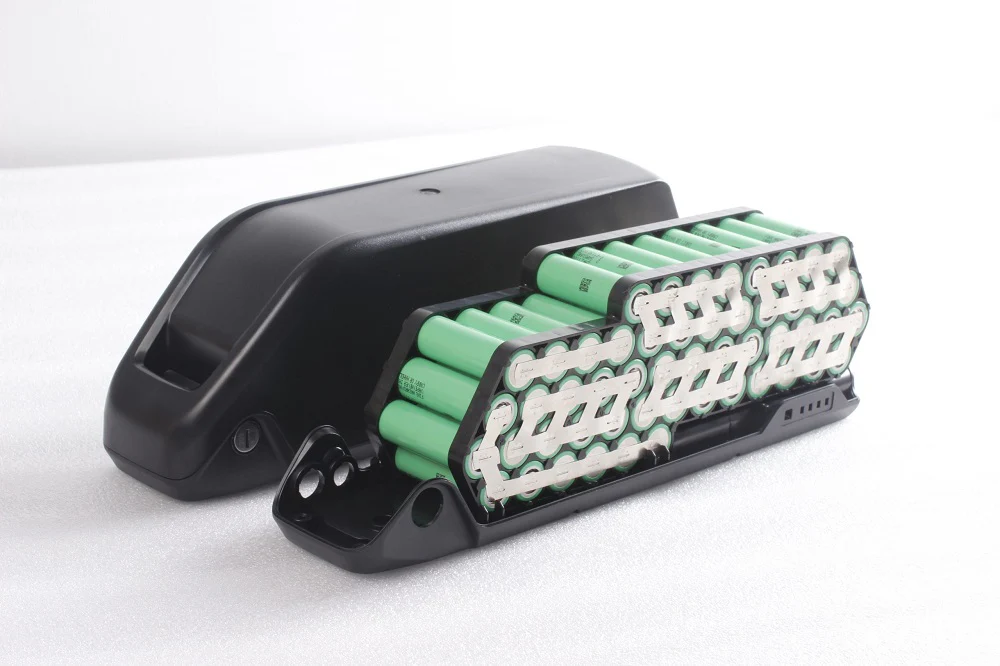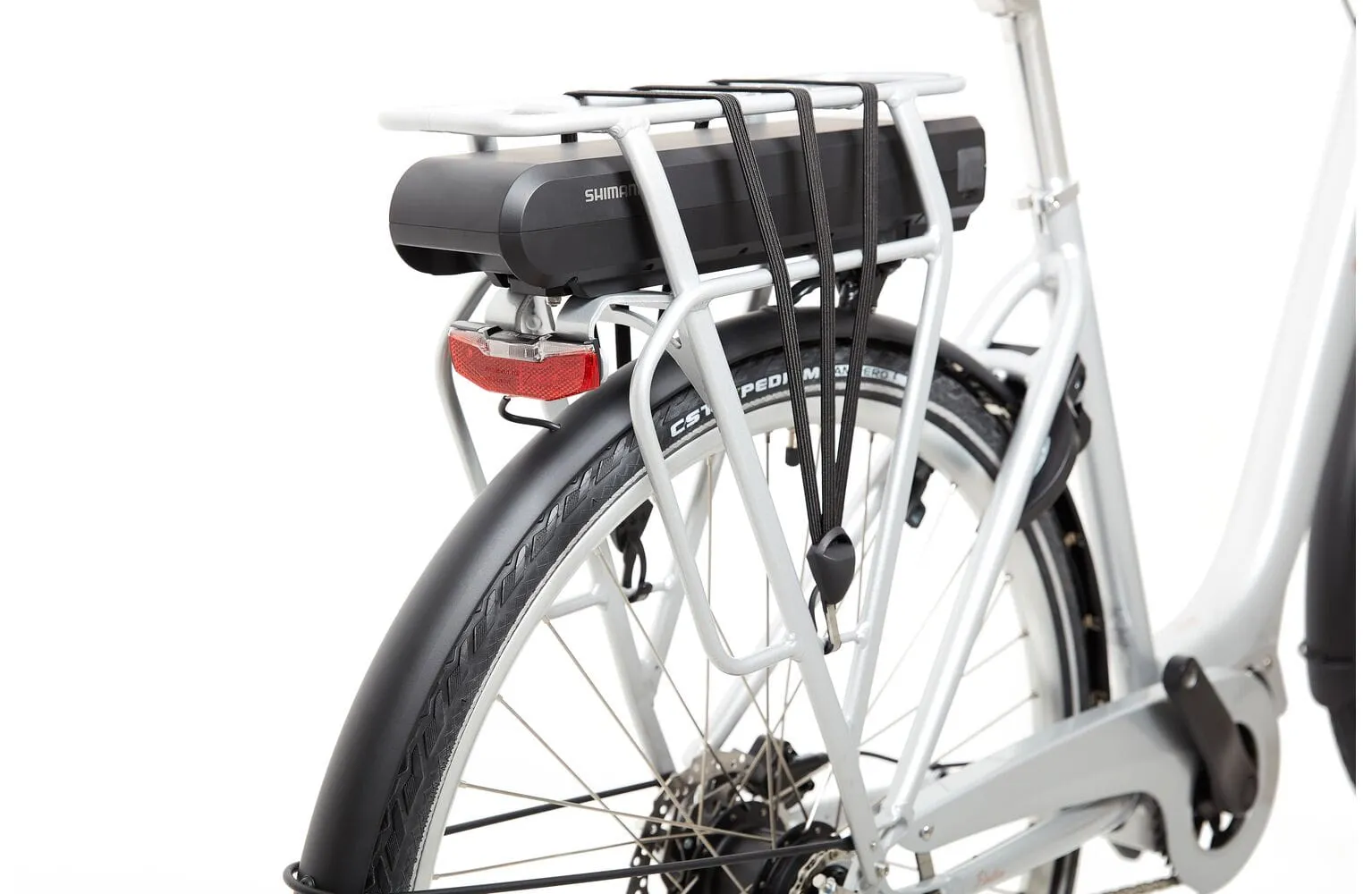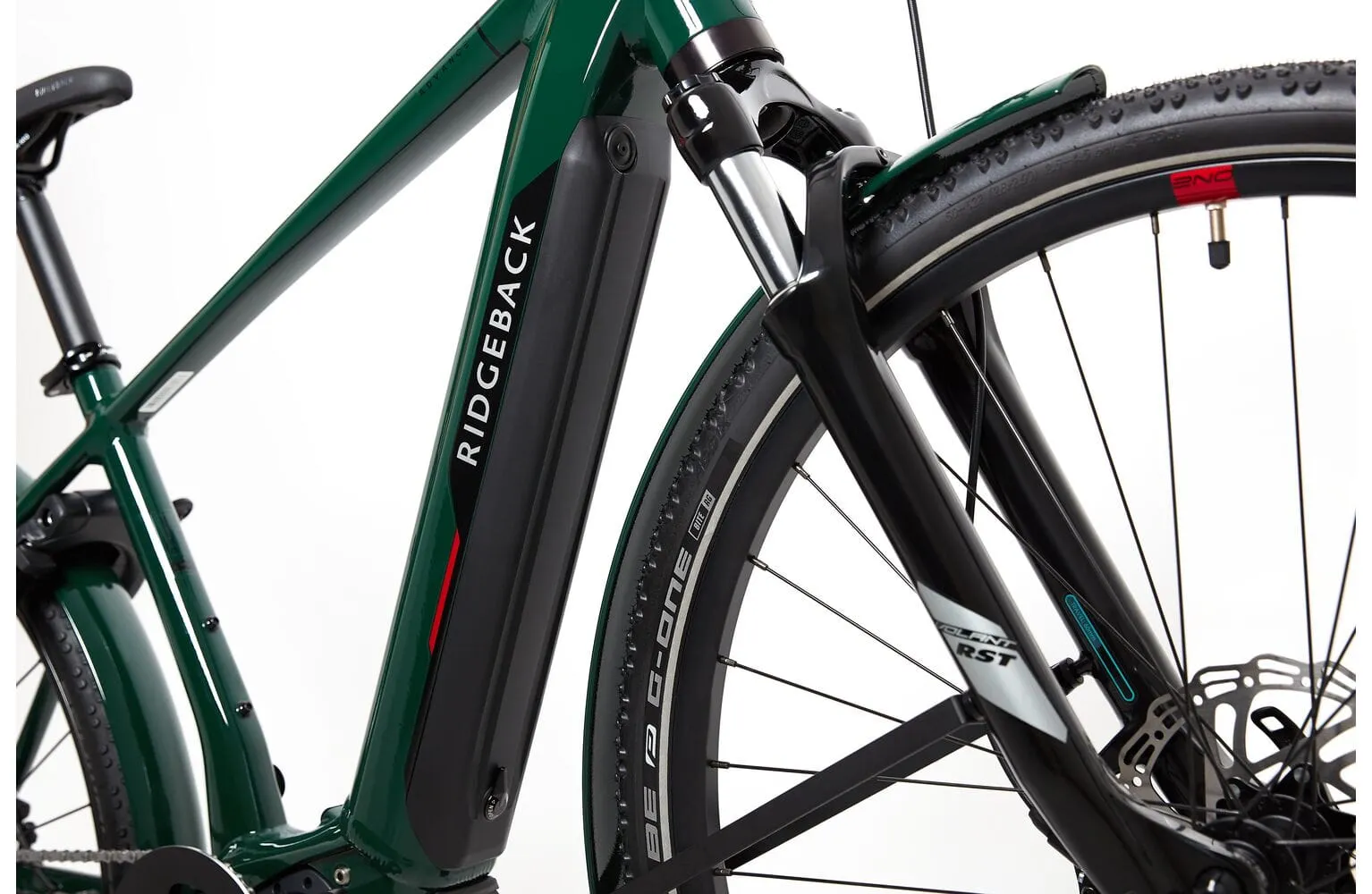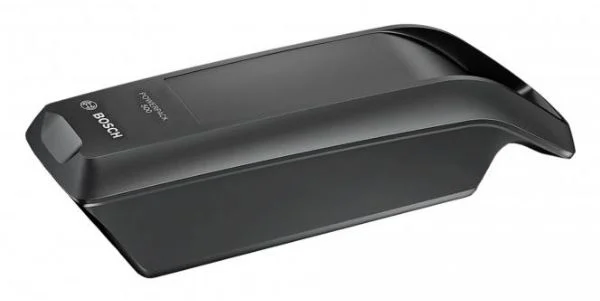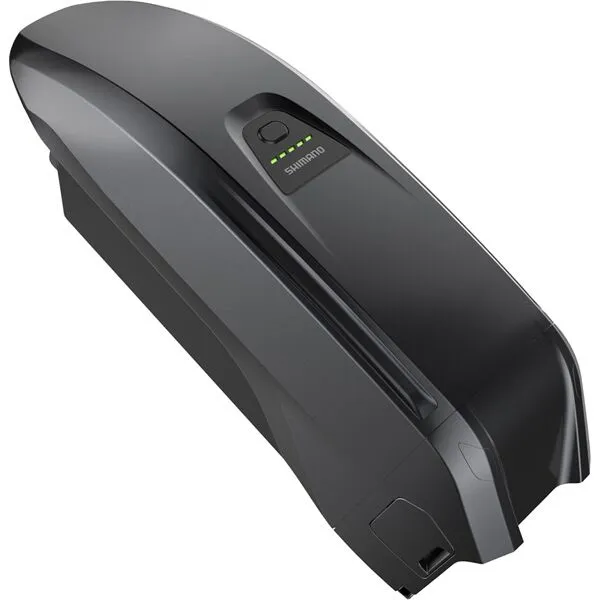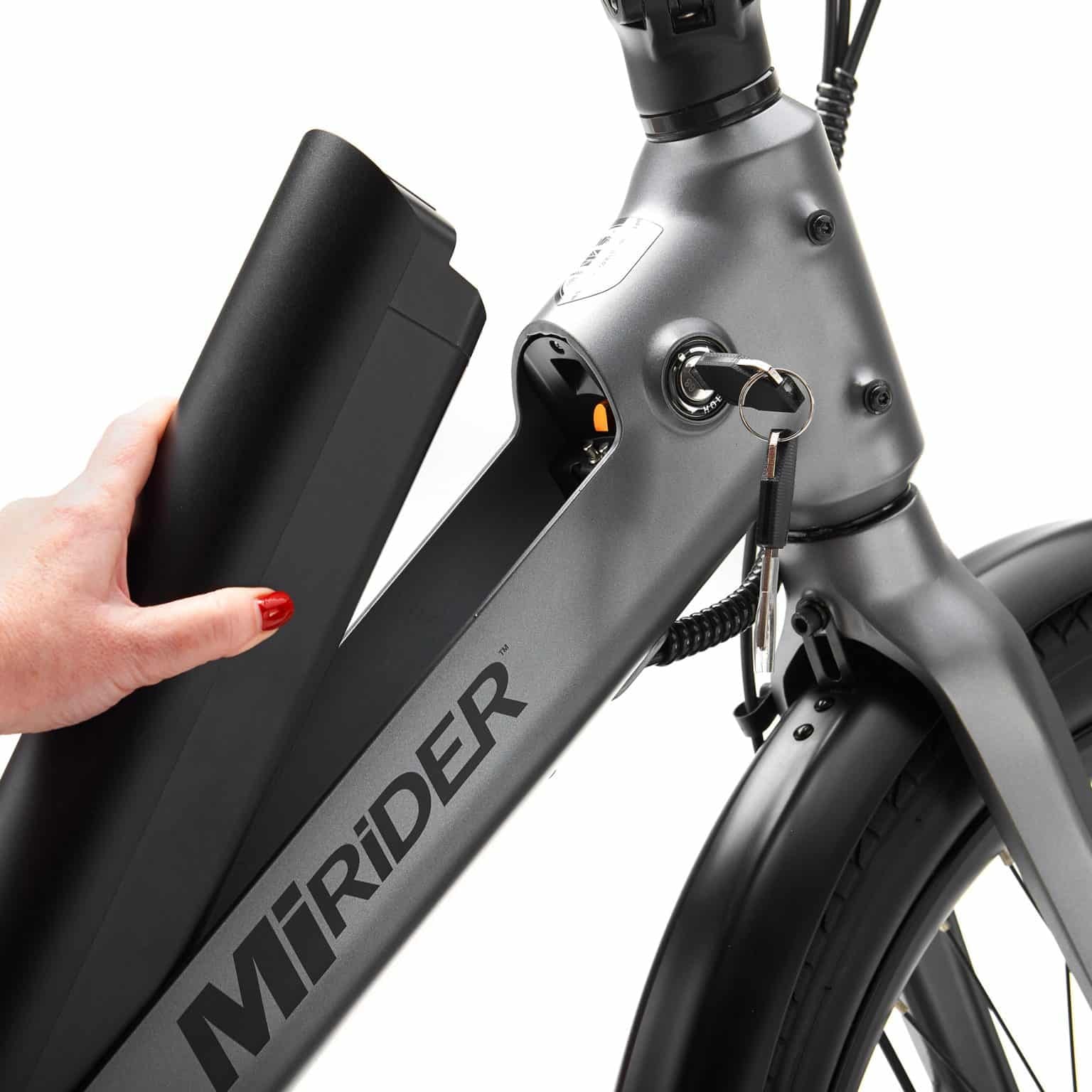Electric bike batteries explained: Long range, lightweight, and fast charging options
Need the best batteries for e-bikes? This guide covers top picks, selection factors, and tips for longevity.
Key takeaways
-
You need to consider battery type both when buying an e-bike in the first place and if you ever need replacement batteries.
-
Choose the right e-bike battery by considering factors like voltage, capacity, and compatibility with your bike model for optimal performance.
-
Lithium-ion batteries, including popular models from Bosch and Shimano, are lightweight, efficient, and offer speedy charging options.
-
Maintaining your e-bike battery through regular charging, proper storage, and cleaning can significantly extend its lifespan and enhance safety.
Key factors when choosing an e-bike battery
Selecting the appropriate electric bike battery significantly enhances your e-bike’s performance and ensures a smooth riding experience. Key considerations include voltage, capacity, and compatibility. Grasping these factors enables you to make informed decisions and avoid potential issues.
Start by evaluating the battery’s voltage and capacity, as these determine its power delivery and lifespan. Equally crucial is the compatibility of the battery with your specific e-bike model and motor.
Understanding these aspects in detail will assist you in selecting the best battery for your needs.
Voltage and capacity
Voltage and capacity are crucial for any electric bike battery. The battery voltage should align with the motor’s requirements for optimal operation. Common voltages include 36V, 48V, and 52V, with higher voltages offering increased power and efficiency by reducing the required current for a given power output.
Battery capacity, typically measured in watt-hours (Wh), indicates how much energy the battery can store. A given Wh value means that the battery can supply that much power for one hour, so you'd expect a 500Wh battery to run a 250W motor for two hours. In practice the system isn't 100% efficient, of course. Lots of factors affect real-world range, including the type of bike, the peak power of the motor, the terrain and the chosen assistance settings. But all else being equal, a larger capacity battery will give you more range. Historically, capacity was measured in amp-hours, but watt-hours is becoming the standard as it provides a clearer understanding of the battery’s total energy potential.
Compatibility
Compatibility between your e-bike and its battery is vital, Different e-bike models often need specific battery connectors and mounting systems. For example, frame-integrated batteries usually aren’t interchangeable with rack-mounted ones, even if their voltage and capacity match.
When selecting a battery to replace, verify that it matches your e-bike’s specific motor type, brand, and model. This ensures efficient and safe operation, preventing potential damage to your e-bike’s components.
If considering a range extender (an additional battery to give more overall capacity and range), confirm its compatibility with your existing battery system to maximise effectiveness.
Types of e-bike batteries
Electric bike batteries come in various types and mounting options, each with its own set of advantages and considerations. The predominant technology used in modern e-bikes is lithium-ion due to its light weight, high energy density, and long lifespan. Selecting the appropriate type and mounting option is key to optimising your e-bike’s performance and user experience.
The three main types of e-bike batteries are frame-mounted, rack-mounted, and integrated batteries. Each type offers unique benefits and is suited to different riding styles and preferences. Examining these types in detail will help you determine which is best for you.
Frame-mounted batteries
Frame-mounted batteries are a popular choice due to their balanced weight distribution and ease of access. These batteries enhance e-bike portability by allowing for lighter frame constructions, where smaller batteries reduce weight while larger ones provide an extended range.
However, each motor system manufacturer has its own frame mounting standard, and they are not interchangeable. For instance, a bike with a Bosch system cannot use a Shimano battery. However, batteries from one drive system manufacturer are compatible, so replacement electric bike batteries are likely to be easier to source than fully-integrated setups.
Rack-mounted batteries
Rack-mounted batteries offer a convenient solution for those who prioritise ease of attachment and removal. These batteries are designed for user-friendly mounting and dismounting, making them ideal for riders who often need to remove their battery for charging or storage.
Additionally, rack-mounted batteries provide excellent protection from water and impacts, enhancing their durability and lifespan. This mounting option is particularly useful for e-bikes used in variable weather conditions or rugged terrains, as it offers added security and longevity.
Integrated batteries
Integrated batteries offer a sleek and streamlined appearance by being built directly into the bike frame. This design not only enhances the aesthetics of the e-bike but also provides better protection against damage and a more centralised weight distribution.
However, replacing integrated batteries can be more challenging than frame or rack-mounted options, as the shape and fitment of the battery are proprietary to the bike manufacturer. Despite this, integrated batteries are becoming increasingly popular due to their seamless integration and improved handling.
Popular battery brands and models
Choosing a reliable battery brand is crucial for ensuring optimal performance and compatibility with your e-bike. Two of the most popular and trusted brands in the market are Bosch and Shimano. Both brands offer a range of batteries designed to meet the diverse needs of e-bike riders.
Bosch is renowned for its extensive compatibility with nearly 600 different e-bike brands, making its batteries a versatile choice for many models. Shimano, the second most popular system, is known for its lightweight designs and rapid charging capabilities.
Bosch PowerPack
Bosch PowerPack batteries are among the most favoured choices for electric bikes due to their proven performance and reliability. These batteries ensure consistent power delivery, which translates to a smooth and enjoyable riding experience.
Bosch PowerPack batteries also integrate seamlessly with various e-bike systems, offering advanced features like battery management and performance tracking. This combination of reliability and technological sophistication makes Bosch PowerPack a top choice for e-bike enthusiasts.
Shimano Steps
Shimano Steps batteries are designed for lightweight applications, making them ideal for various e-bike models. These batteries are noted for their rapid charging capabilities, allowing users to reach 80% capacity in just two hours.
The lightweight design of Shimano Steps batteries not only enhances the bike’s overall performance but also provides convenience for riders who need a quick recharge during their rides. This makes them a popular choice for those who prioritise efficiency and ease of use.
Extending the life of your e-bike battery
Taking care of your e-bike battery is essential for ensuring a long life and optimal performance. Simple practices like regular charging, proper storage, and routine maintenance can significantly extend your battery’s lifespan and keep your e-bike running smoothly.
Maintaining a charge level between 30% and 80% can significantly extend your e-bike battery’s lifespan. Additionally, keeping the battery clean and stored in a temperature-controlled environment helps prevent damage and maintains efficiency. Here are some best practices.
Regular charging
Regular charging helps ensure your e-bike battery lasts as long as possible. A lower depth of discharge (DOD) results in more charge/discharge cycles, extending the battery’s lifespan. Even if unused, a lithium-ion cell should be charged at least once every six months to maintain its health.
Shimano Steps batteries, for example, allow for rapid charging, reaching 80% capacity in just two hours. This makes regular charging convenient and ensures your battery is always ready for your next cycle ride.
Proper storage
Store your e-bike battery in a dry, temperature-controlled environment to prevent damage. For long-term storage, keep the battery at about 50-60% charge to maintain health.
It’s also important to recycle lithium-ion batteries properly. They should not be placed in household trash and must be taken to designated recycling or hazardous waste collection sites. This practice not only protects the environment but also recovers valuable materials.
Maintenance and care
Regular cleaning of your e-bike battery and its connections prevents dirt and grime buildup, maintaining performance. Periodically check the connections to ensure they are secure and functioning properly.
Keep the chain lubricated and ensure the brakes function correctly to avoid unnecessary strain on the battery. These simple maintenance steps can significantly extend your e-bike battery’s life and enhance your riding experience.
Safety considerations
Safety is a critical aspect of using e-bike batteries. While lithium-ion batteries are generally safe, they do carry a risk of unexpected ignition due to heat generation. Proper storage and handling can minimise this risk and ensure your battery operates safely.
Store your batteries indoors at temperatures between 10°C and 20°C to prevent degradation. Proper charging and maintenance of your batteries significantly contribute to their safety and longevity. Here are some specific safety practices.
Allow the battery to cool down for at least 30 minutes after charging to minimise overheating risks. Charge batteries on a flat, hard surface to dissipate heat effectively and avoid flammable surfaces to prevent fire hazards.
Adhere to the manufacturer’s charging instructions to ensure safety and never leave batteries charging unattended or while sleeping. These practices help prevent potential fire risks and ensure your e-bike battery remains safe.
Do not use batteries that show signs of damage, as they can pose significant safety hazards. Ensure e-bike batteries are stored away from extreme temperatures to prevent risk. Handling lithium-ion batteries safely is crucial to prevent accidents and ensure longevity.
Proper disposal methods are equally important; terminals should be taped before disposal to prevent short circuits, and batteries should be taken to designated recycling sites.
Frequently Asked Questions
What type of battery is dominant in e-bikes?
Lithium-ion batteries are the go-to choice for e-bikes due to their efficiency and longevity. They really power the ride!
How often should I charge my e-bike battery if it's not in use?
You should charge your e-bike battery at least once every six months if it's not in use to keep it healthy. This simple routine can help prolong its life.
What should I do if my e-bike battery shows signs of damage?
If your e-bike battery shows signs of damage, it's crucial to stop using it immediately for safety reasons. You should replace it or consult a professional for proper handling.
How can I store my e-bike battery properly?
To properly store your e-bike battery, keep it in a dry, temperature-controlled space and aim for a charge level of about 50-60%. This way, you'll help maintain its longevity and performance!
What are the benefits of integrated batteries?
Integrated batteries provide a clean aesthetic and improved weight balance, but keep in mind that replacement might be trickier due to their unique designs.
Summary
Choosing the right electric bike battery involves understanding key factors like voltage, capacity, and compatibility. Different types of batteries offer unique advantages, whether they are frame-mounted, rack-mounted, or integrated. Brands like Bosch and Shimano provide reliable options tailored to various needs.
Maintaining your battery through regular charging, proper storage, and routine care can significantly extend its lifespan. Safety considerations, including safe charging practices and proper handling, ensure your e-bike battery remains reliable and safe. Armed with this knowledge, you can make informed decisions and enjoy a superior e-bike experience.
Related content
Read more great content from ebike.help and become an electric bike expert today.

